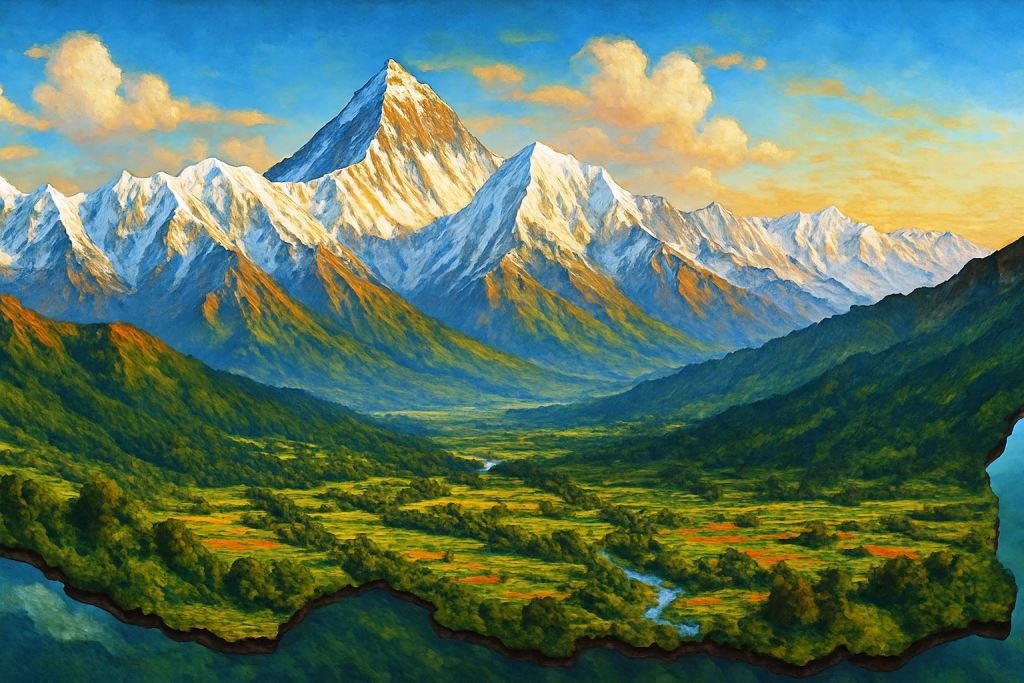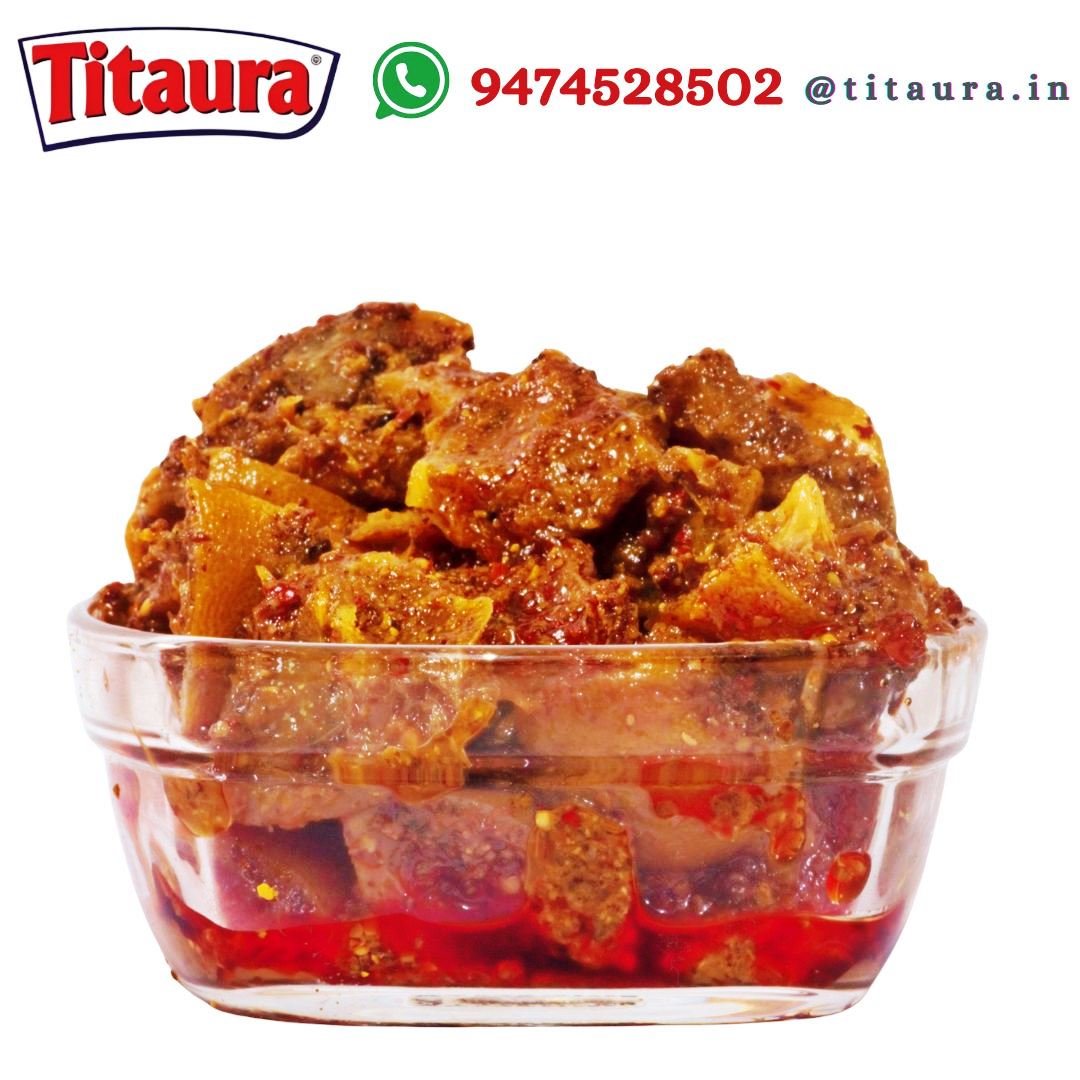Nepal is a fascinating country nestled between the towering peaks of the Himalayas and the lush plains bordering India and China. Renowned for its breathtaking landscapes, vibrant culture, and rich history, Nepal offers an unrivaled blend of adventure, tradition, and spirituality.
Geography and Natural Beauty
Nepal occupies 147,516 sq.km in South Asia. The country is sandwiched between the Tibet Autonomous Region of China in the north and India on the other three sides, making it entirely landlocked. Its unique shape stretches about 800km east to west and 90–150km north to south. The nation boasts dramatic terrain, ranging from the lowland plains of the Terai to snow-capped peaks, including Mount Everest (8,848m), the world’s tallest mountain. Nepal hosts eight of the planet’s ten highest peaks, including Kanchenjunga, Lhotse, Makalu, and Annapurna.
The territory is a mosaic of three main regions:
- Himalayan Region: Dominated by the world’s tallest peaks and alpine landscapes.
- Mid-Hill Region: Features lush valleys and rolling hills, including major cities like Kathmandu and Pokhara.
- Terai Region: Fertile plains with subtropical conditions, serving as Nepal’s breadbasket.
A network of more than 6,000 rivers, chief among them the Koshi, Gandaki, and Karnali, drains the country, feeding into the vast Ganges basin.
Culture and Society
Nepal’s society is a rich tapestry woven from over 120 ethnicities and 123 languages. The country’s heritage springs from a mix of Indo-Aryan, Tibeto-Burman, and indigenous influences. Nepali is the official language, spoken by a majority, though regional tongues like Maithili, Bhojpuri, Tharu, and Tamang are also vibrant.
Key cultural features include:
- Religion: Nepal is officially secular but predominantly Hindu, with Buddhism as a significant minority. Hindu and Buddhist traditions often blend seamlessly, particularly in festivals and rituals. Other religions include Islam, Christianity, and indigenous faiths.
- Festivals: Every year, the calendar is packed with colorful festivals such as Dashain, Tihar, Holi, and Buddha Jayanti, each reflecting the nation’s deep spirituality and communal harmony.
- Art and Craft: Kathmandu Valley is especially known for its intricate woodwork, stone sculpture, metal craft, and vibrant paintings, as well as ancient temples and stupas.
The regular Nepali meal is dal bhat tarkari (lentil soup, rice, and curried vegetables), with regional specialities like momo (dumplings), and unique Newar and Thakali cuisines.
History and Politics
Nepal traces its roots back to the time of the Vedas and is famously the birthplace of Gautama Buddha in Lumbini. The Kathmandu Valley was a center of classical civilization and trade on the ancient Silk Road. The Gorkha kingdom unified Nepal in the 18th century. Remarkably, Nepal was never colonized, acting as a buffer state between imperial China and British India.
Nepal was ruled by a monarchy until revolutionaries, led by Maoists, ended the last Hindu monarchy in the world in 2008. Nepal is now a federal democratic republic, undergoing a historic and sometimes tumultuous transition towards stable governance.
Tourism and Adventure
Nepal is a mecca for trekkers, mountaineers, and adventurous souls. In 2023, Nepal welcomed more than a million international tourists, making tourism its largest industry. Top attractions include:
- Mount Everest Region: Legendary treks like the Everest Base Camp, or even daring summit expeditions.
- Annapurna Circuit and Sanctuary: With breathtaking mountain vistas and hospitable villages.
- Kathmandu Valley: Home to seven UNESCO World Heritage Sites, bustling bazaars, and ancient temples.
- Lumbini: Revered as Buddha’s birthplace, drawing pilgrims worldwide.
- Wildlife and Eco-tourism: Chitwan and Bardia National Parks offer safaris where visitors can spot rhinos, tigers, and elephants.
Adventure sports such as white-water rafting, paragliding in Pokhara, and jungle safaris are increasingly popular, drawing thrill-seekers from around the globe.
Economy
Nepal’s economy is primarily agrarian, employing about 65% of the population. However, tourism, remittances from overseas workers, and a growing service sector are crucial contributors. In the fiscal year 2024–25, Nepal’s economy is projected to grow by 4.61%, with per capita income reaching $1,517. The government targets infrastructure development, energy projects, and tourism as critical growth engines.
Challenges persist, including political instability, natural disasters, infrastructure gaps, and dependence on imports. Yet, progress in sectors like hydropower, tourism, and agriculture offer hope for robust future growth.
Fun Facts
- Nepal is the only country with a non-rectangular flag.
- The average elevation is second only to Bhutan.
- The living goddess, Kumari Devi, resides in Kathmandu and is central to many festivals.
Final Thoughts
Nepal is a land where nature’s grandeur and human culture live in spectacular harmony. Whether you seek adventure on Himalayan slopes, spiritual awakening in ancient temples, or the warmth of diverse communities, Nepal stands as an unforgettable destination, proud of its past and hopeful for its future.






Leave a Reply